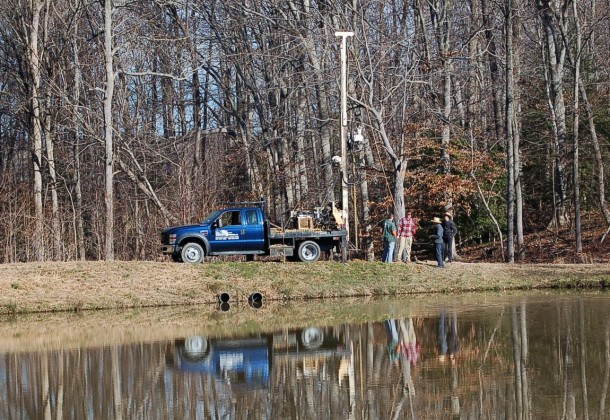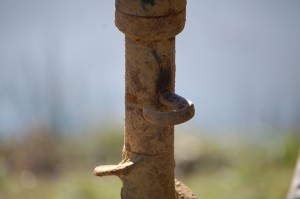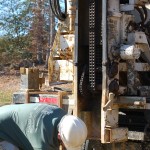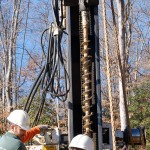The Science of Ponds

 It used to be only God, or acts of His, could made a pond.
It used to be only God, or acts of His, could made a pond.
Then farmers got pretty good at it, and then it got to be that just about anyone with a backhoe and the right geological conditions could make a pond.
But, today, it takes an engineer.
Bob Taylor Engineering once built ponds using the proverbial backhoe and tamping the most clay-like soil that could be found on-site across the bottom and up the sides. Dams with outflow pipes at the bottom were built and their designs even included spillways for emergencies.
 The designs and geology remain much the same today, but on-site clay is a less likely liner. Today the clay lining a pond must be tested and certified as meeting soil conservation specifications.
The designs and geology remain much the same today, but on-site clay is a less likely liner. Today the clay lining a pond must be tested and certified as meeting soil conservation specifications.
Recently, BTE tested an old pond in Mechanicsville, Maryland, and the lining failed the tests. Not an easy fix.
Clay must meet compaction and composition standards. Although the shorthand is as simple as describing a need for ‘fat’ or ‘lean’ clay, there is nothing simple about the testing.
 Soil compaction is measured by the number of times 130 pounds is dropped to drive a pipe 30 inches into the ground. The soil itself is tested at a four-foot, six-foot and eight-foot depth. And it is tested at the site of the dam.
Soil compaction is measured by the number of times 130 pounds is dropped to drive a pipe 30 inches into the ground. The soil itself is tested at a four-foot, six-foot and eight-foot depth. And it is tested at the site of the dam.
To make a pond, a dam is built where the water could most likely escape. The dam isn’t necessarily obvious, looking much the same as the rest pond edge. But the dam contains pipes buried close to the bottom of the pond to allow water to slowly escape from below the surface instead of spilling out from the top of the pond. Many dams are additionally engineered to serve as spillways when ponds do overflow.
Trenching to the dam, testing soil compaction below the spillway, establishing the clay type in the center of the dam and assuring the clay can slow the escape of water sufficiently to maintain a pond – these are analyses that have to be completed to construct a new pond or change its use. For example, changing a farm pond into a neighborhood pond requires the pond be certified to meet current standards.
To meet the current standards, the recently tested Mechanicsville pond would need the sides and bottom replaced with a currently specified grade of clay.























